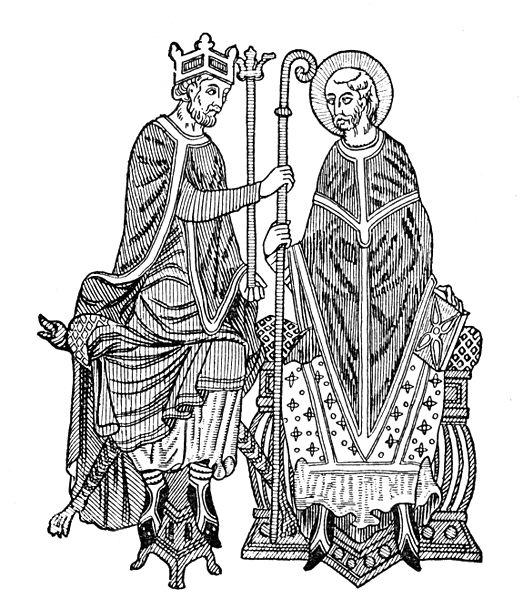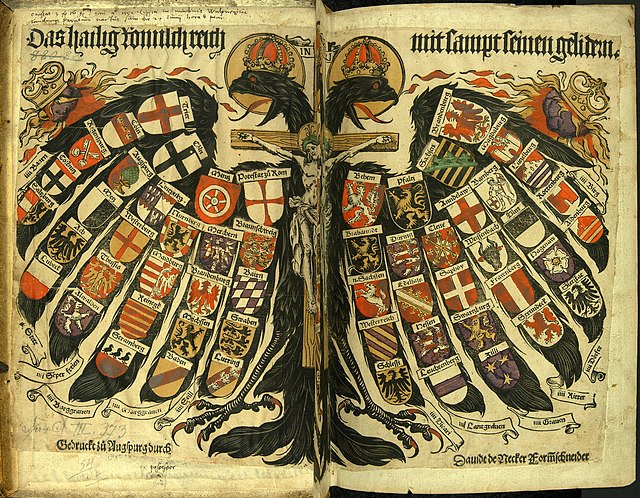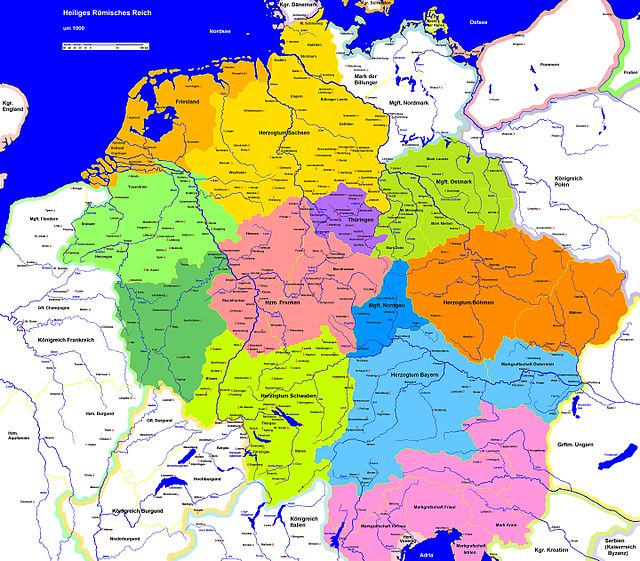The Concordat of Worms, also referred to as the Pactum Callixtinum or Pactum Calixtinum, was an agreement between the Catholic Church and the Holy Roman Empire which regulated the procedure for the appointment of bishops and abbots in the Empire. Signed on 23 September 1122 in the German city of Worms by Pope Callixtus II and Emperor Henry V, the agreement set an end to the Investiture Controversy, a conflict between state and church over the right to appoint religious office holders that had begun in the middle of the 11th century.
Calixtus II
20th-century interpretation of a medieval king investing a bishop
Henry V renounced his right to invest bishops and abbots with ring and crosier (pictured).
The Holy Roman Empire, also known as the Holy Roman Empire of the German Nation after 1512, was a polity in Central and Western Europe, usually headed by the Holy Roman Emperor. It developed in the Early Middle Ages and lasted for almost 1,000 years until its dissolution in 1806 during the Napoleonic Wars.
The double-headed eagle with coats of arms of individual states, the symbol of the Holy Roman Empire (painting from 1510)
The Holy Roman Empire during the Ottonian dynasty
Henry begging Matilda of Tuscany and Hugh of Cluny in Canossa Castle (miniature in an illuminated manuscript kept in the Vatican Library, 1115)
Frederick Barbarossa, Holy Roman Emperor







